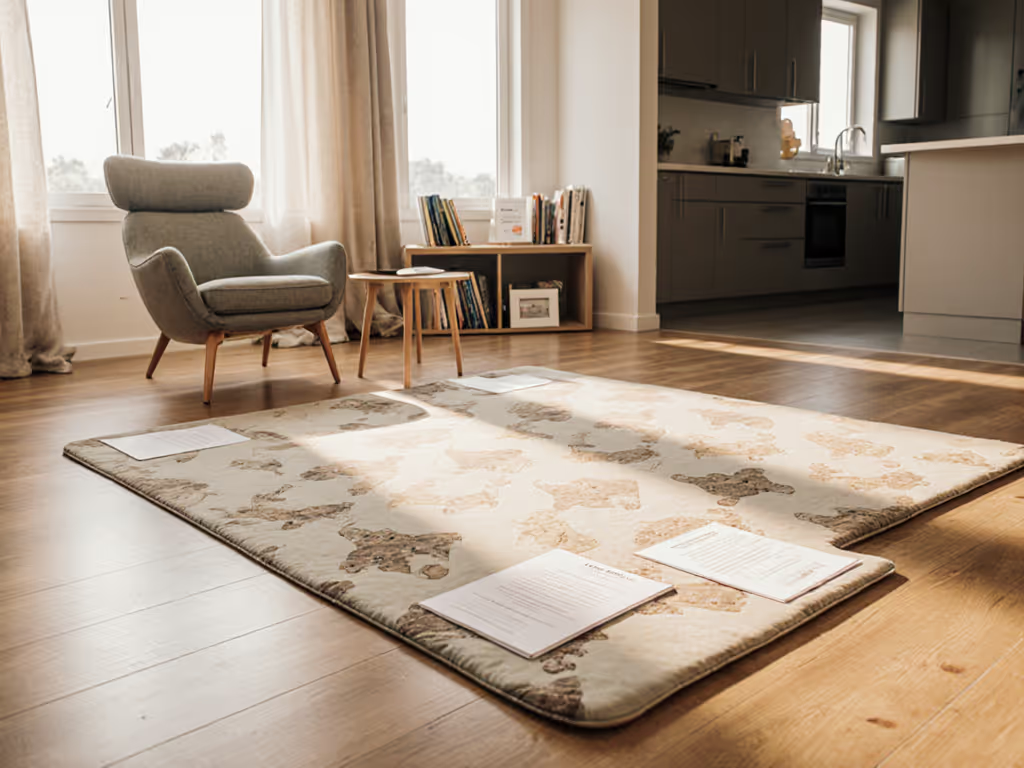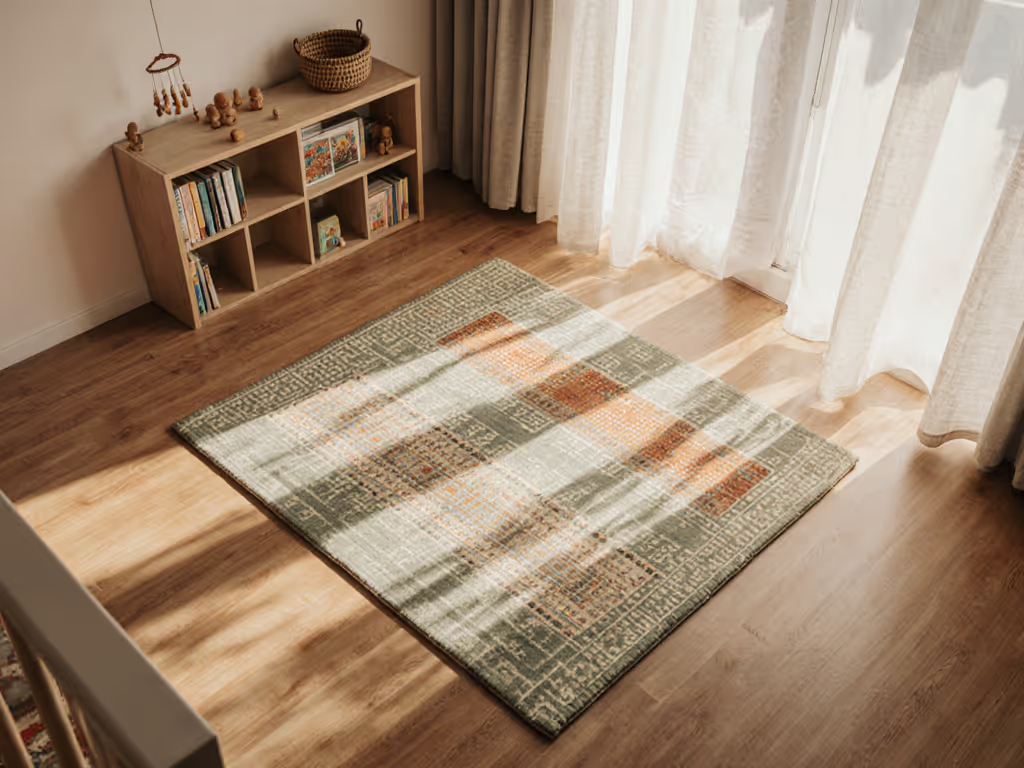
7 Sensory Play Mat Ideas for Safe, Engaging Learning
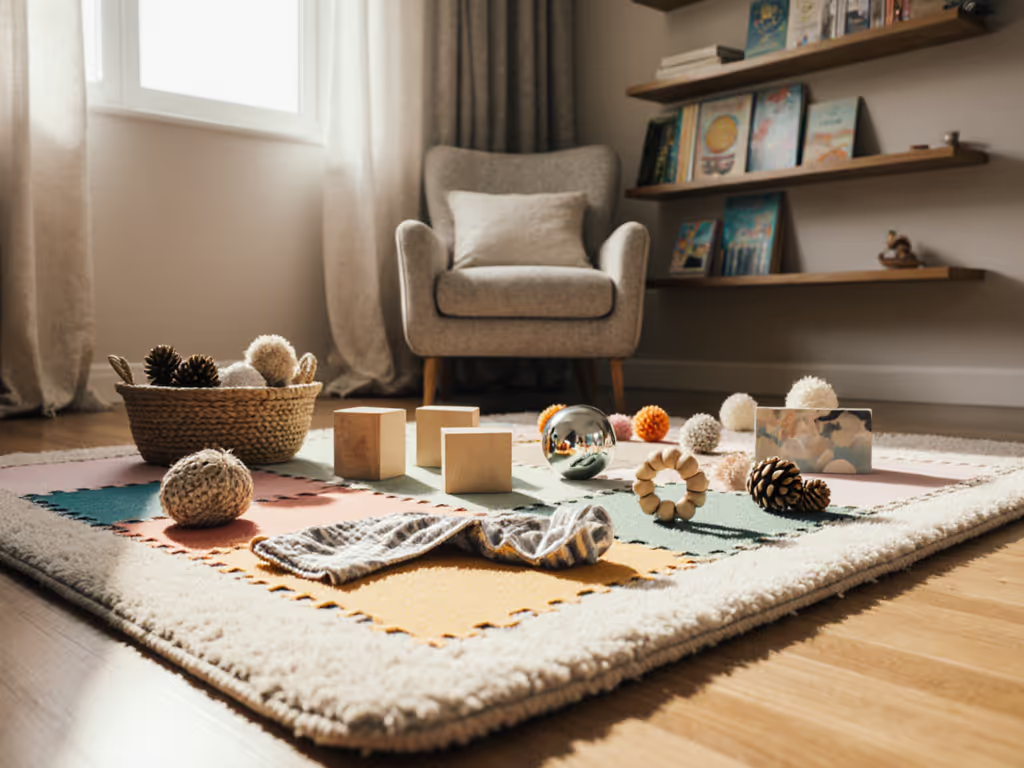
Did you know that a baby's brain forms over a million new neural connections every second in the first years of life? Early playtime is more than fun, it sets the stage for vital sensory and motor development. The right play mat can spark tactile exploration, visual growth, and curious movement, turning everyday floor time into a powerful chance for learning and healthy progress.
Quick Summary
| Takeaway | Explanation |
|---|---|
| 1. Choose textured play mats for sensory growth. | Textured mats aid motor skills by providing varied surfaces for babies to explore with touch. |
| 2. Use high-contrast mats to enhance visual development. | High-contrast patterns stimulate infants' visual processing and promote neural connections. |
| 3. Incorporate sound features for auditory exploration. | Mats with sound encourage curiosity and teach cause-and-effect relationships through touch and sound. |
| 4. Select eco-friendly materials for safety. | Choosing non-toxic and organic mats protects your baby from harmful chemicals while supporting the environment. |
| 5. Opt for foldable mats for space efficiency. | Foldable play mats provide versatile, space-saving solutions for play areas in smaller living spaces. |
1. Choose Textured Play Mats for Tactile Exploration
Your baby's tiny feet are secret learning powerhouses waiting to explore the world through touch. Textured play mats transform ordinary floor time into a rich sensory adventure that supports critical developmental milestones.
These specialized mats do more than just provide a soft surface. According to research from barefoot development experts, walking or crawling on varied textures helps children develop crucial motor skills and body awareness. Uneven surfaces naturally encourage muscles and ligaments to engage, strengthening foot mechanics and improving balance.
What makes textured play mats so magical? They create a mini exploration zone right in your living room. Imagine surfaces with bumps, ridges, soft patches, and different material feels that invite your child to discover through touch. As your little one crawls or takes first steps, they receive important proprioceptive input that helps them understand their body's position and movement.
When selecting a textured play mat, look for designs that offer:
- Multiple distinct texture zones
- Safe, non toxic materials
- Washable surfaces
- Interesting tactile variations
By choosing a thoughtfully designed play mat, you are not just creating a play space. You are building a developmental playground that supports your child's physical and sensory growth.
2. Incorporate High-Contrast Mats to Stimulate Vision
Newborns see the world differently and high-contrast play mats are like visual gymnasiums for their developing brains. While adults perceive a rainbow of subtle colors, infants are drawn to stark patterns that spark neural connections and visual learning.
Research reveals that babies process black, white, and bold primary color patterns most effectively. These graphic designs are not just visually appealing they are neurological building blocks. Experts have found that high-contrast mats can significantly support visual tracking and strengthen eye muscles during critical early developmental months.
The science behind these mats is fascinating. When your baby looks at bold geometric shapes or sharp color transitions, their visual cortex lights up with activity. Neural pathways form rapidly as their eyes learn to focus, track, and process visual information. Think of these mats as workout equipment for your infant's emerging visual skills.
When selecting a high-contrast mat, consider these key features:
- Clear black and white geometric patterns
- Bold primary color zones
- Safe materials that can withstand drool and play
- Designs that encourage eye movement and tracking
Position the mat about 8 to 10 inches from your baby's face for optimal visual stimulation. Watch as they gradually develop stronger focus, more deliberate eye movements, and increased visual engagement with their exciting new world.
3. Use Mats with Sound and Crinkle Features
Babies are natural sound explorers, and play mats with auditory elements transform simple floor time into a symphony of learning. These interactive surfaces are more than just noisemakers they are sophisticated developmental tools that engage multiple sensory pathways simultaneously.
Sound and crinkle features do remarkable work in your infant's brain. When your baby touches a crinkly surface or triggers a gentle sound, they are actually learning profound lessons about cause and effect. Each unexpected noise or texture becomes a mini scientific experiment where they discover how their actions create reactions.
Multisensory play mats with sound elements support critical developmental milestones. As infants interact with different textures that make sounds, they strengthen neural connections in their auditory and tactile processing centers. The soft rustling of a crinkle patch or the gentle chirp of an embedded sound element helps train their sensory integration skills.
When selecting a sound enhanced play mat, look for:
- Soft crinkle textures in different zones
- Built in gentle sound elements
- Safe attachable sound producing toys
- Varied auditory experiences
Remember that sound should be gentle and not overwhelming. The goal is curiosity and engagement not sensory overload. Watch your baby explore these auditory landscapes with wonder as they learn about their world one delightful sound at a time.
4. Select Eco-Friendly and Safe Material Options
Not all play mats are created equal, and your baby's safety depends on making smart material choices. Selecting an eco-friendly play mat is about protecting both your child and the planet while creating a safe exploration space.
Modern parents understand that material quality matters deeply. Reliable manufacturers now prioritize non toxic materials that are certified to rigorous safety standards like the EN 71 series. These standards ensure play mats are free from harmful chemicals that could potentially impact your infant's delicate developing systems.
Organic materials offer significant advantages. Sustainable options like organic cotton muslin and Oeko tex certified polyester provide soft surfaces that are gentle on sensitive skin. These materials breathe better, resist bacterial growth, and minimize potential allergic reactions. Your play mat becomes more than just a surface it transforms into a protective ecosystem designed specifically for your baby.
When searching for the perfect play mat, prioritize these characteristics:
- Certified non toxic materials
- Organic fabric options
- Easy to clean surfaces
- Minimal chemical treatments
- Sustainable manufacturing processes
Think of your play mat as your baby's first environmental shield. By choosing thoughtfully manufactured materials, you are creating a safe space that supports healthy development while teaching an important lesson about environmental responsibility.
5. Opt for Foldable Mats for Space-Saving Play
Modern parenting demands smart solutions for tiny living spaces. Foldable play mats are the ultimate game changer for families who want to create engaging play areas without sacrificing precious square footage in their homes.
Today's innovative play mats are designed with flexibility in mind. Modular systems allow parents to combine multiple smaller mats into expansive play zones or quickly collapse them for seamless storage. These transformative surfaces adapt to your changing needs just as rapidly as your baby grows and explores.
Reversible and flexible materials like organic cotton muslin provide incredible versatility. Imagine a play mat that can transform from a colorful tummy time surface to a compact rolled bundle in seconds. These smart designs acknowledge that parents need functional solutions that look great and perform brilliantly.
When selecting a foldable play mat, consider these key features:
- Easy roll or fold mechanisms
- Lightweight construction
- Multiple configuration options
- Soft yet durable materials
- Compact storage capabilities
By choosing a foldable play mat, you are not just buying a surface for your baby. You are investing in a dynamic play environment that grows with your family and respects the reality of modern living spaces. Smart parents understand that versatility is the ultimate luxury.
6. Pick Mats That Encourage Crawling and Movement
Crawling is your baby's first epic adventure into independent movement. A strategically designed play mat can transform this fundamental developmental stage from a basic skill into an exciting exploration of physical potential.
Sensory mats with varied textures and gentle elevation changes become natural movement laboratories for infants. These surfaces challenge motor skills by creating mini obstacle courses that inspire curiosity and build physical confidence. As your baby navigates different textures and slight inclines, they are simultaneously developing balance, muscle strength, and spatial awareness.
The magic happens when babies encounter surfaces that gently challenge their emerging capabilities. Textured zones with bumpy regions, soft rises, and interesting tactile landscapes encourage babies to reach, stretch, and propel themselves forward. Each crawl becomes a learning experience where muscles strengthen and neural pathways for movement develop.
When selecting a movement encouraging play mat, prioritize:
- Multiple texture zones
- Gentle surface variations
- Soft but supportive materials
- Areas that invite exploration
- Safe and stable design
Think of your play mat as a developmental playground. By providing an environment that subtly challenges and supports movement, you are giving your baby the perfect foundation for physical literacy and confident exploration.
7. Try DIY Sensory Mats for Personalized Learning
Your kitchen table can become a sensory development workshop with just a few simple materials and a dash of creativity. DIY sensory mats offer parents a budget friendly way to create custom learning experiences tailored exactly to their baby's developmental needs.
Homemade sensory mats are more than just craft projects they are personalized learning tools that adapt as your baby grows. By using materials you already have at home like felt, cotton fabric, or textured ribbons, you can design surfaces that target specific developmental milestones. A simple high contrast felt board can become a visual gymnasium for your infant's emerging cognitive skills.
The beauty of DIY sensory mats lies in their flexibility. You can integrate crinkly materials, attach different textured patches, or create bold geometric patterns that stimulate visual tracking. Each handmade mat becomes a unique learning landscape that reflects your baby's individual curiosity and developmental stage.
To create your own sensory mat, consider these elements:
- High contrast black and white patterns
- Multiple texture zones
- Safe attachable elements
- Washable materials
- Interesting visual designs
Remember that perfection is not the goal. Your baby will be delighted by the love and intention behind your creation. Every stitch and fabric choice is an invitation to explore, learn, and grow.
This table summarizes key aspects of choosing play mats to support a baby's sensory and physical development.
| Topic | Description | Key Considerations |
|---|---|---|
| Textured Play Mats | Provide tactile exploration enhancing motor skills and body awareness. | Look for multiple texture zones, safe materials. |
| High-Contrast Mats | Stimulate visual development using bold patterns. | Use black and white designs, primary colors. |
| Sound and Crinkle Features | Engage auditory and tactile senses for learning cause and effect. | Include soft sounds, varied auditory experiences. |
| Eco-Friendly Materials | Ensure safety and sustainability. | Choose certified non-toxic and organic options. |
| Foldable Mats | Offer space-saving and versatility. | Look for rollable, lightweight designs. |
| Crawling and Movement Encouragement | Support physical development and exploration. | Include texture variations and stable design. |
| DIY Sensory Mats | Create personalized learning experiences. | Use high-contrast patterns, varied textures. |
Transform Your Child’s Learning Space with a Perfect Sensory Mat
You want your baby to have a safe and stimulating environment that grows with them—from their very first tummy time to energetic toddler play. The article highlighted pain points like finding mats that support tactile exploration, encourage movement, and are made from safe materials. Many parents worry about product safety, lasting quality, and whether a mat will really engage their child in meaningful ways.
Make your play space worry-free and wonder-filled by choosing one beautiful, long-lasting play mat that matches your home and supports every stage of development. At Floorbloom, our rigorously tested mats offer textured zones for sensory discovery, organic and non toxic materials for peace of mind, and versatility that adapts to small or growing spaces. Ready to see the difference a thoughtfully chosen mat can make? Explore our curated selection now at https://floorbloom.store and let your child’s learning adventures begin today.
Frequently Asked Questions
What are the key benefits of textured play mats for babies?
Textured play mats provide crucial tactile exploration for babies, supporting the development of motor skills and body awareness. Choose a mat with varied textures to encourage crawling and walking, as this engages different muscles and improves balance.
How can high-contrast play mats help stimulate my baby's vision?
High-contrast play mats feature bold patterns that enhance infants' visual processing. Position the mat about 8 to 10 inches from your baby's face to stimulate focus and tracking skills as they gaze at the stark designs.
What materials should I look for when selecting a safe play mat?
Prioritize play mats made from non-toxic and eco-friendly materials, such as organic cotton or Oeko-Tex certified fabrics. Check for certifications that ensure the mat is free from harmful chemicals and gentle on your baby's skin.
How do sound and crinkle features in play mats contribute to learning?
Play mats with sound and crinkle elements engage babies' auditory senses, teaching them about cause and effect through the sounds they create. Choose mats with gentle audio features to encourage curiosity without overwhelming their senses.
What should I consider when creating a DIY sensory mat?
When making a DIY sensory mat, focus on integrating multiple textures and high-contrast colors to stimulate tactile and visual development. Use safe materials like felt and ribbons, and aim for a variety of elements that will engage your baby as they grow.
How can I maximize the learning experience with crawling-encouraging play mats?
Select play mats that offer varied textures and gentle inclines to challenge your baby's motor skills. Focus on different texture zones that promote exploration, helping them strengthen muscles and develop coordination as they crawl.
Related Articles

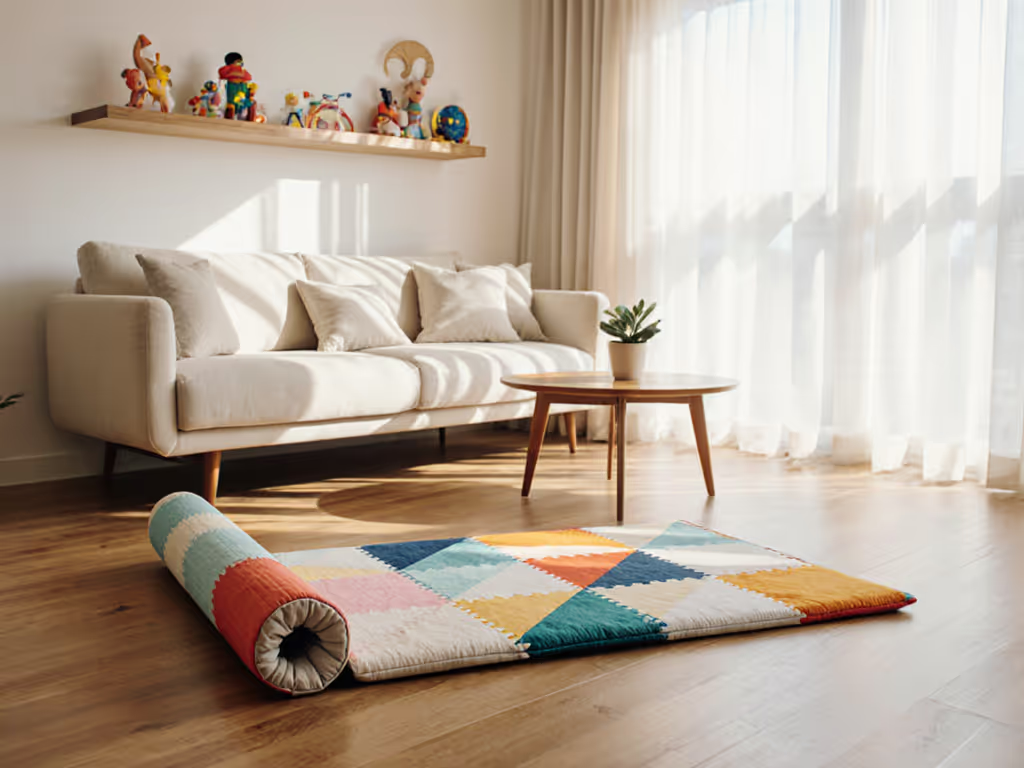
What Is a Foldable Play Mat? Complete Guide
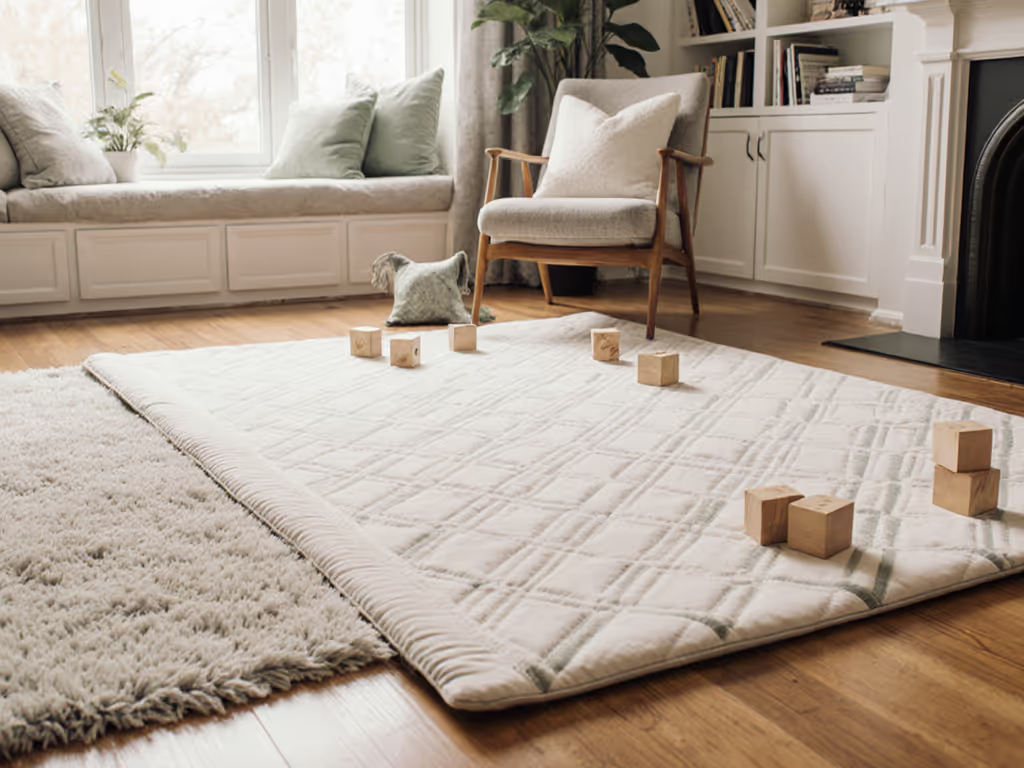
Role of Play Mats: Complete Guide for Safe Play Spaces
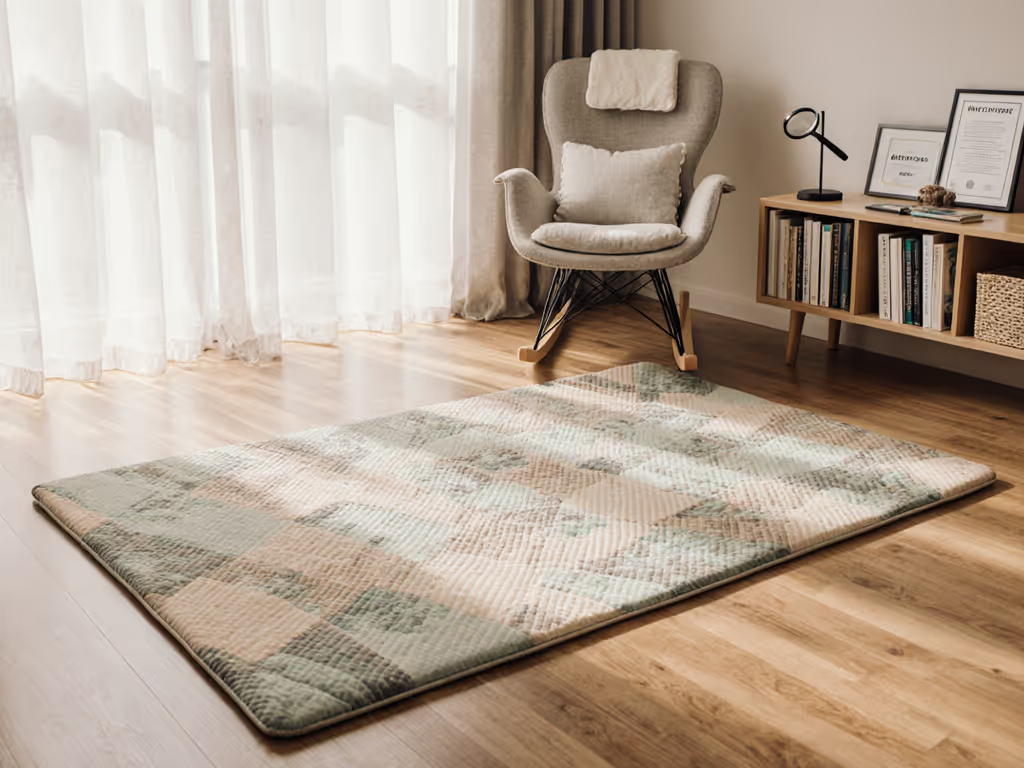
Play Mat Safety Standards Explained: Essential Guide
